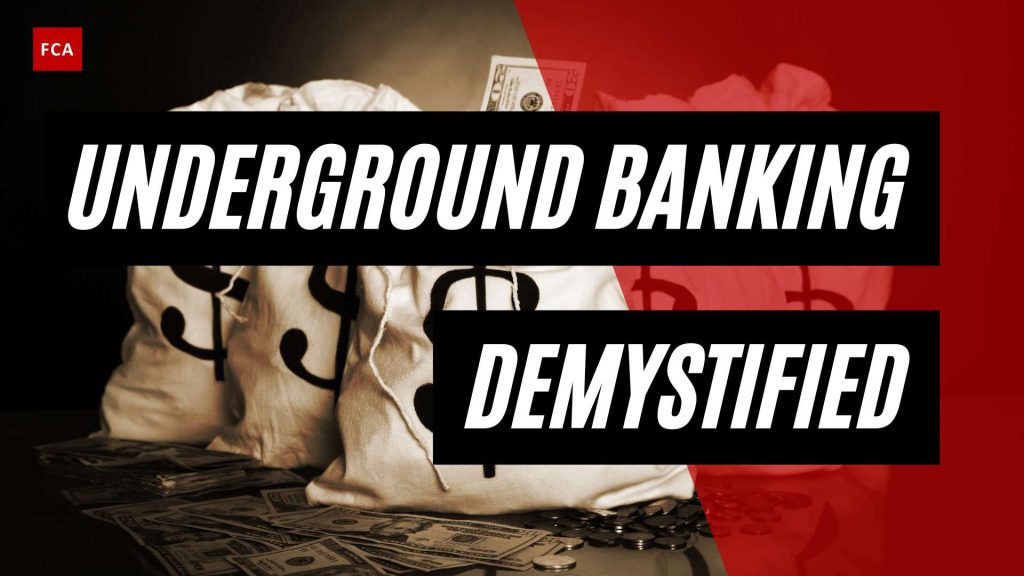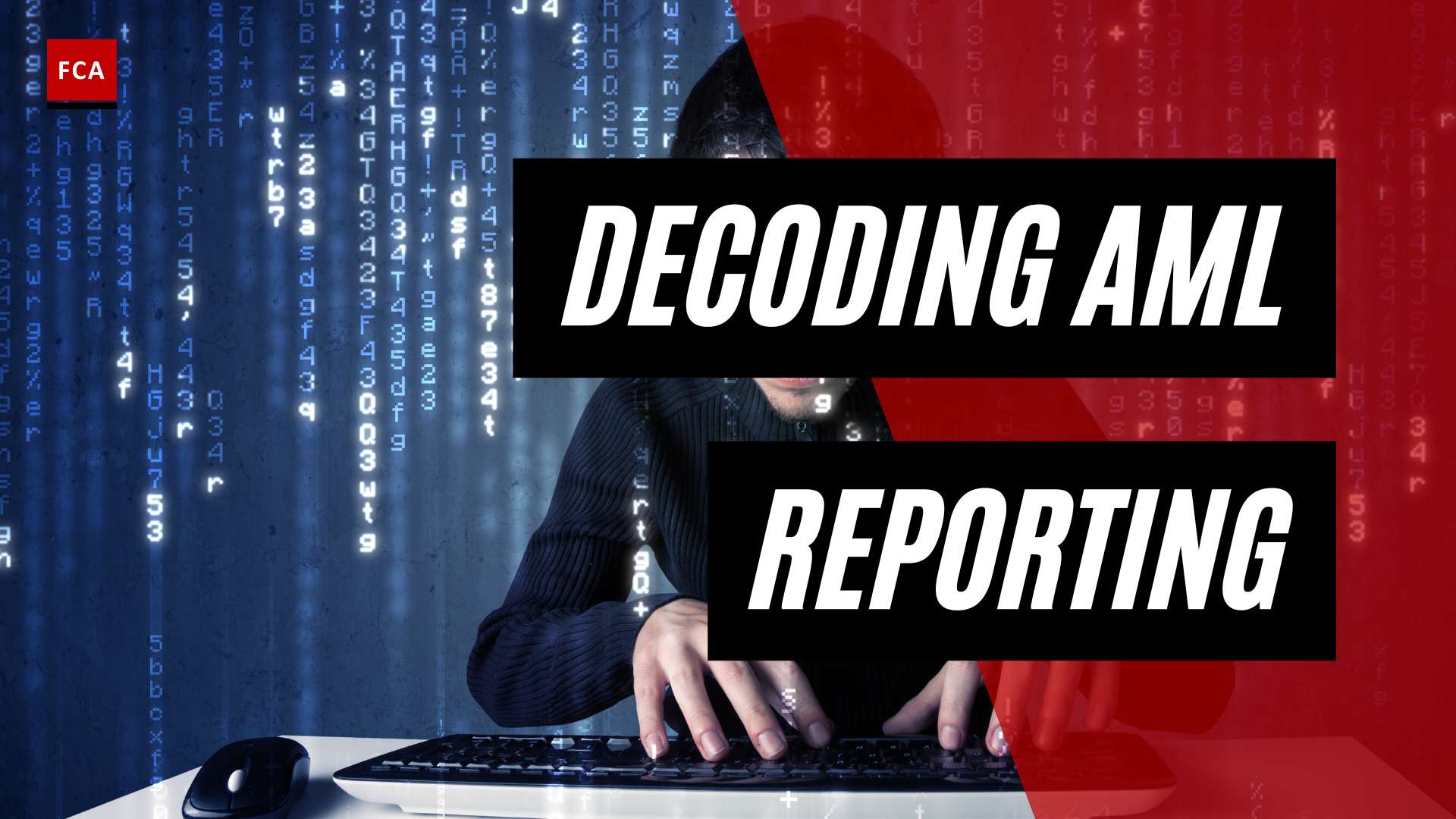Understanding Underground Banking
In the realm of financial systems, there exists a parallel world known as underground banking. Also referred to as alternative remittance systems, informal funds transfer systems, or informal value transfer systems, underground banking refers to informal arrangements that operate outside the boundaries of the formal banking system. These systems facilitate the transfer of money through channels that bypass traditional financial institutions (Australian Institute of Criminology).
What is Underground Banking?
Underground banking, as the name suggests, operates clandestinely and is prevalent in various parts of the world, including Hong Kong, Paraguay, Canada, and Nepal. These informal systems have existed for centuries, predating the formal banking system. They offer similar operational characteristics to formal banks but without the bureaucracy and regulatory scrutiny associated with traditional financial institutions.
The systems that fall under the umbrella of underground banking include hawala, hundi, and fei ch’ien. These systems rely on trust, established networks, and word-of-mouth referrals to facilitate money transfers across borders and regions. Transactions within underground banking systems are typically conducted through brokers or agents who serve as intermediaries between individuals or businesses wishing to transfer funds.
The Risks and Challenges of Underground Banking
While underground banking systems can provide convenience and flexibility, they also present significant risks and challenges. The lack of oversight and regulation makes these systems vulnerable to exploitation by criminal elements. Underground banking has been associated with various illicit activities, including intellectual property theft, arms and drug trafficking, tax evasion, and the smuggling of illegal immigrants (Australian Institute of Criminology).
One of the primary concerns associated with underground banking is its potential for facilitating money laundering activities. Criminals may utilize these informal systems to obscure the origins and movement of illicit funds. The anonymity and lack of transparency within underground banking networks make it challenging for law enforcement agencies and financial regulators to trace and monitor suspicious transactions.
Furthermore, underground banking systems have been exploited by terrorist networks for funds transfer. The September 11, 2001 terrorist attacks brought attention to the use of hawala networks by Osama Bin Laden and al Qaeda. As a result, regulatory focus expanded beyond the formal financial system to non-traditional sectors, such as real estate and the gambling industry, which can also be utilized for money laundering purposes.
Efforts to combat underground banking and mitigate its risks involve regulatory measures and international cooperation. Authorities implement regulations and laws to address the challenges posed by these informal systems. However, regulating underground banking is a complex task due to its decentralized and often cross-border nature. International cooperation among governments, financial institutions, and law enforcement agencies is vital to effectively combat the risks associated with underground banking (Chek News).
Understanding the intricacies of underground banking is essential for professionals working in compliance, risk management, anti-money laundering, and anti-financial crime. By staying informed about these informal systems and their associated risks, individuals and organizations can work towards safeguarding the integrity of the global financial system.
Hawala: An Informal Value Transfer System
In the realm of underground banking, one of the most prominent and widely known informal value transfer systems is Hawala. Hawala is a method of transferring money around the globe without actually moving it physically. Instead, it operates on a trust-based system between brokers and clients, eliminating the need for traditional financial institutions and their regulatory systems (Investopedia).
How Does Hawala Work?
Hawala transactions are often utilized in countries where there are restrictions on foreign currency or banking systems, providing a way to work around these limitations. Here’s a simplified explanation of how Hawala works:
- Client A: The process begins when a client, known as “Client A,” approaches a hawala broker or “hawaladar” with the intention of sending money to another location.
- Instructions: Client A provides the hawaladar with the amount of money they wish to transfer and the details of the recipient, including the name and location.
- Receipt: The hawaladar issues a receipt to Client A, which includes a unique identification number or code.
- Communication: The hawaladar then contacts another hawaladar, known as “Hawaladar B,” in the recipient’s location, conveying the details of the transaction.
- Payment: Hawaladar B, acting on trust and reputation, makes the payment to the recipient based on the instructions received.
- Settlement: At a later date, the hawaladars settle their accounts through various means, such as offsetting the transactions or using other financial arrangements.
This trust-based system enables the movement of funds without physical transfers. Hawala transactions can be quick and efficient, as they rely on established networks and personal relationships. However, it’s important to note that this system operates outside the traditional banking system, raising concerns about money laundering and terrorist financing.
Hawala and Money Laundering
While the traditional hawala system can serve legal needs, such as sending remittances or facilitating trade in areas where banking services are scarce, it has also been associated with illicit activities due to its anonymity and lack of regulation. The nature of Hawala transactions makes it challenging for authorities to trace the movement of funds and identify the parties involved.
Hawala networks have been exploited for money laundering purposes, allowing individuals to move illicit funds across borders while avoiding detection. Criminal organizations and individuals involved in illegal activities may utilize the anonymity and trust-based nature of Hawala to launder money obtained through illegal means.
To combat the potential misuse of Hawala for money laundering, regulatory bodies and law enforcement agencies have implemented measures to monitor and investigate suspicious transactions. Authorities work to identify and disrupt hawala networks involved in illicit activities, while also raising awareness about the risks associated with informal value transfer systems like Hawala.
Understanding the inner workings of Hawala and its vulnerabilities to money laundering is crucial for professionals working in compliance, risk management, anti-money laundering, and anti-financial crime. By gaining insight into these informal value transfer systems, regulatory efforts can be enhanced to effectively combat the misuse of underground banking channels.
Other Informal Value Transfer Systems
In addition to hawala, there are other informal value transfer systems that have been utilized for centuries and predate the formal banking system. These systems operate parallel to the formal banking system and offer similar operational characteristics without the bureaucracy and regulatory scrutiny. Two notable examples are hundi and fei ch’ien.
Hundi: A Traditional System
Hundi is a traditional value transfer system that originated in South Asia and has been used for centuries. It operates on the basis of trust and relies on a network of brokers to facilitate transactions. The hundi system allows individuals to transfer money without physically relocating it, making it an attractive option for both legal and illegal activities.
Under the hundi system, individuals provide funds to a hundi broker in one location, who then issues a hundi, a type of promissory note, to the recipient in another location. The recipient can then take the hundi to another hundi broker in their location to receive the funds. This system enables seamless money transfers across regions and can be used for both domestic and international transactions.
Fei Ch’ien: The Chinese Equivalent
Fei ch’ien is the Chinese equivalent of hundi and operates in a similar manner. It is a traditional informal value transfer system that has been prevalent in Chinese communities around the world. Fei ch’ien also relies on a network of trusted intermediaries to facilitate money transfers.
In the fei ch’ien system, individuals deposit money with a fei ch’ien broker in one location, who then issues a receipt to the sender. The recipient can then present the receipt to a fei ch’ien broker in their location to receive the funds. This system allows for efficient and secure transfers within the Chinese community, both domestically and internationally.
These informal value transfer systems, including hundi and fei ch’ien, have been used for legitimate purposes such as remittances and trade facilitation. However, they have also been exploited for illicit activities, including money laundering and terrorism financing. Regulators and law enforcement agencies face significant challenges when it comes to monitoring and regulating these systems due to their informal nature and lack of transparency.
Understanding the intricacies of these alternative remittance systems is crucial for combating financial crime and ensuring the integrity of the formal financial system. Efforts to regulate and combat underground banking involve international cooperation and coordination among regulatory authorities to address the risks associated with these informal value transfer systems.
The Role of Underground Banking in Criminal Activities
Underground banking, also known as informal value transfer systems, can play a significant role in various criminal activities, including money laundering, drug trafficking, arms dealing, and even terrorist financing. These activities pose significant challenges for law enforcement and national security agencies worldwide (Vancouver Sun). Let’s explore two key criminal activities associated with underground banking: money laundering and terrorism financing.
Money Laundering and Underground Banking
One of the primary concerns with underground banking systems is their potential to facilitate money laundering activities. Money laundering is the process of making illegally obtained funds appear legitimate by disguising their true origin. Underground banking networks can provide an avenue for individuals and criminal organizations to move funds across borders, making it difficult to trace the source and destination of these transactions.
The use of hawala networks is particularly notable in the context of money laundering. Hawala is an informal value transfer system that operates outside traditional banking channels. It relies on a network of hawala brokers to facilitate transactions, often across different countries. The lack of proper oversight and regulation in these networks makes them susceptible to exploitation for illicit financial activities, including money laundering. Criminals can use hawala transactions to move funds without leaving a clear paper trail, making it challenging for authorities to detect and investigate these illegal activities (hawala money laundering).
It’s important to note that while underground banking systems can be used for money laundering, not all transactions within these systems are illicit. Many individuals in certain regions rely on these systems for legitimate reasons, such as remittances and access to financial services in areas with limited formal banking infrastructure. However, the lack of transparency and regulation within these systems creates a significant challenge for authorities in distinguishing between legitimate and illicit transactions.
Underground Banking and Terrorism Financing
Another alarming aspect of underground banking is its potential connection to terrorism financing. Terrorist networks have been known to exploit informal value transfer systems, such as hawala, for funds transfer. The September 11, 2001 terrorist attacks brought attention to the use of hawala networks by Osama Bin Laden and al Qaeda (Australian Institute of Criminology). The decentralized and unregulated nature of these systems makes it difficult for authorities to monitor and detect suspicious transactions related to terrorism financing.
To combat these risks, regulatory authorities and law enforcement agencies around the world are working together to enhance regulations and increase scrutiny over underground banking activities. The focus includes strengthening Know Your Customer (KYC) requirements, implementing transaction monitoring systems, and promoting international cooperation to share information and intelligence (Chek News). However, effectively regulating and combating underground banking remains a significant challenge due to the complex and elusive nature of these systems (Chek News).
In conclusion, underground banking systems have the potential to facilitate various criminal activities, including money laundering and terrorism financing. Their lack of oversight and regulation creates challenges for authorities in detecting and disrupting illicit financial flows. Regulatory efforts and international cooperation are crucial in combating the risks associated with underground banking and protecting the integrity of the global financial system.
Regulating and Combating Underground Banking
As underground banking poses significant risks to the global financial system, regulators and authorities are taking steps to regulate and combat this illicit practice. Efforts are being made to enhance regulatory frameworks, strengthen international cooperation, and develop strategies to mitigate the risks associated with underground banking.
Regulatory Efforts and Challenges
Regulators around the world are working to develop comprehensive regulatory frameworks to address the challenges posed by underground banking. These frameworks aim to bring these informal value transfer systems into the formal financial sector, subjecting them to regulatory oversight and anti-money laundering (AML) measures.
In Canada, for example, underground banking is regulated under the Proceeds of Crime (Money Laundering) and Terrorist Financing Act (PCMLTFA) and associated Regulations. Individuals and entities engaged in foreign exchange dealing, remitting or transmitting funds, issuing or redeeming money orders, or dealing in virtual currencies are required to register with FINTRAC (Financial Transactions and Reports Analysis Centre of Canada) and fulfill specific obligations to combat money laundering and terrorist financing. Operating an unregistered money services business is considered a violation and can result in criminal or administrative penalties.
However, regulating underground banking is not without its challenges. These informal value transfer systems often operate in the shadows, making it difficult for regulators to monitor and enforce compliance. The lack of transparency, complex networks, and the use of multiple jurisdictions pose significant challenges in regulating underground banking effectively. Authorities and financial institutions need to develop a deep understanding of these systems, including their structure, operating dynamics, customer bases, and connections to legal financial systems.
To address these challenges, regulators are enhancing their monitoring and investigative capabilities. They are focusing on information exchange, collaborative investigations, and disrupting the operations of underground banking systems. Financial institutions are also strengthening their compliance programs to detect and prevent illicit activities associated with underground banking. Measures such as enhanced customer due diligence and transaction monitoring are being implemented to mitigate the risks posed by these informal value transfer systems (FDIC).
International Cooperation in Combating Underground Banking
Given the global nature of underground banking networks, international cooperation is crucial in combating this illicit practice. Authorities and financial institutions from different countries are working together to share information, coordinate investigations, and disrupt the operations of underground banking systems.
Efforts to combat underground banking involve countries such as the United States, China, and Australia, among others. These coordinated efforts aim to exchange intelligence, enhance collaboration, and develop strategies to disrupt and dismantle underground banking networks. By pooling resources and expertise, regulators and law enforcement agencies can more effectively combat money laundering, terrorist financing, and other financial crimes associated with these illicit networks.
To combat underground banking effectively, international cooperation should focus on sharing best practices, developing common standards, and promoting information exchange. Regular dialogue and collaboration between countries are essential to address the challenges posed by underground banking and strengthen global efforts to combat money laundering, terrorist financing, and other financial crimes.
In conclusion, regulating and combating underground banking require a multi-faceted approach that involves regulatory efforts, enhanced compliance measures, and international cooperation. By strengthening regulatory frameworks, enhancing monitoring capabilities, and promoting collaboration among countries, authorities and financial institutions can mitigate the risks associated with underground banking and protect the integrity of the global financial system.









